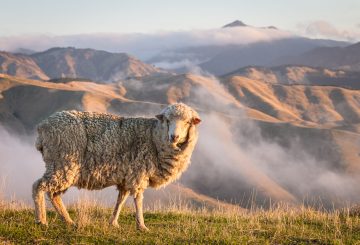뉴질랜드 대규모 단호박 재배업체 중 한 기업이 식물성 우유를 들고 대체 단백질 아시아 시장에 뛰어들고 있다.
카보차우유(Kabocha milk)는 혹스베이에 살고 있는 셰인 뉴먼(Shane Newman)과 세계 최초로 아보카도 우유를 개발한 일본 유명 요리사 사치 노무라(Sachie Nomura)의 합작품이다.
일본 호박 품종인 카보차는 일본 및 동아시아 식단의 주재료이며 뉴질랜드는 일본과 한국에 카보차를 가장 많이 수출하는 나라 중 하나이다.
기초산업부는 지속가능 식품 섬유 기금을 통해 $95,000 이상을 기부해 일본, 한국, 중국 등의 소비자들에게 어필할 상온 보관 카보차우유 레시피를 만들고 이를 제조, 마케팅하는 데 힘을 보탰다.
뉴먼씨는 40년이 넘는 기간 동안 가족들이 신선한 농산물 및 수출 사업을 통해 구축한 강력한 유통 및 소매 채널을 이용했다고 전하며, 이로써 카보차우유가 약 5,000개의 아시아 소매업체, 슈퍼마켓, 편의점 체인의 대규모 유통망에 접근할 수 있었다고 말했다.
뉴먼은 “우리 카보차우유는 수출에 적합하지 않아 폐기될 뻔한 Tag-3 등급의 과일을 사용하여 높은 가치의 지속 가능하고 수출 가능한 제품을 생산하고 있다”면서, “뉴질랜드의 카보카 산업에 새로운 기회가 찾아왔다는 것은 매우 만족스러운 일”이라고 말했다.
뉴먼씨는 모든 제품은 해외로 수출되는 반면, 그 과정에서는 지역 내의 자원: 농부, R&D 및 제조업체, 포장 및 물류 회사를 이용하고 있다고 말했다.
그는 카보차가 뉴질랜드에서 재배되고 생산되는 스토리텔링은 브랜드화에 중요한 부분이라고 말했다.
뉴먼은 “뉴질랜드 재배업자들은 이미 소비자들 사이에서 신뢰도가 매우 높기 때문에 우리는 마케팅에서 제품이 어디서 생산되는지를 강조한다. 또한 이미 제품 컨셉, 맛, 브랜드에 이르기까지 매우 긍정적인 소비자 평가를 얻었다” 밝혔다.
카보차우유는 가족 식단에 건강한 영양소를 더해주는 간편하고 맛있는 방법으로써 하루 중 언제든지 섭취할 수 있는 일상적인 ‘우유 대체’ 제품으로 자리매김하고 있다.
MPI의 투자 프로그램 책임자인 스티브 페노(Steve Penno)씨는 카보차우유가 뉴질랜드 식품 분야에서 유의미한 고용 기회를 창출하고 있으며 회사가 확장됨에 따라 이러한 기회는 계속 넓혀져 나갈 것이라고 말했다.
“또한 이는 재배자들이 잉여 생산물로부터 더 많은 수확과 가치를 창출할 수 있는 혁신적인 방법이다. 현재 뉴질랜드에서 재배되는 카보차의 10~15%가 국물맛을 내는 재료로 사용된다.





























































